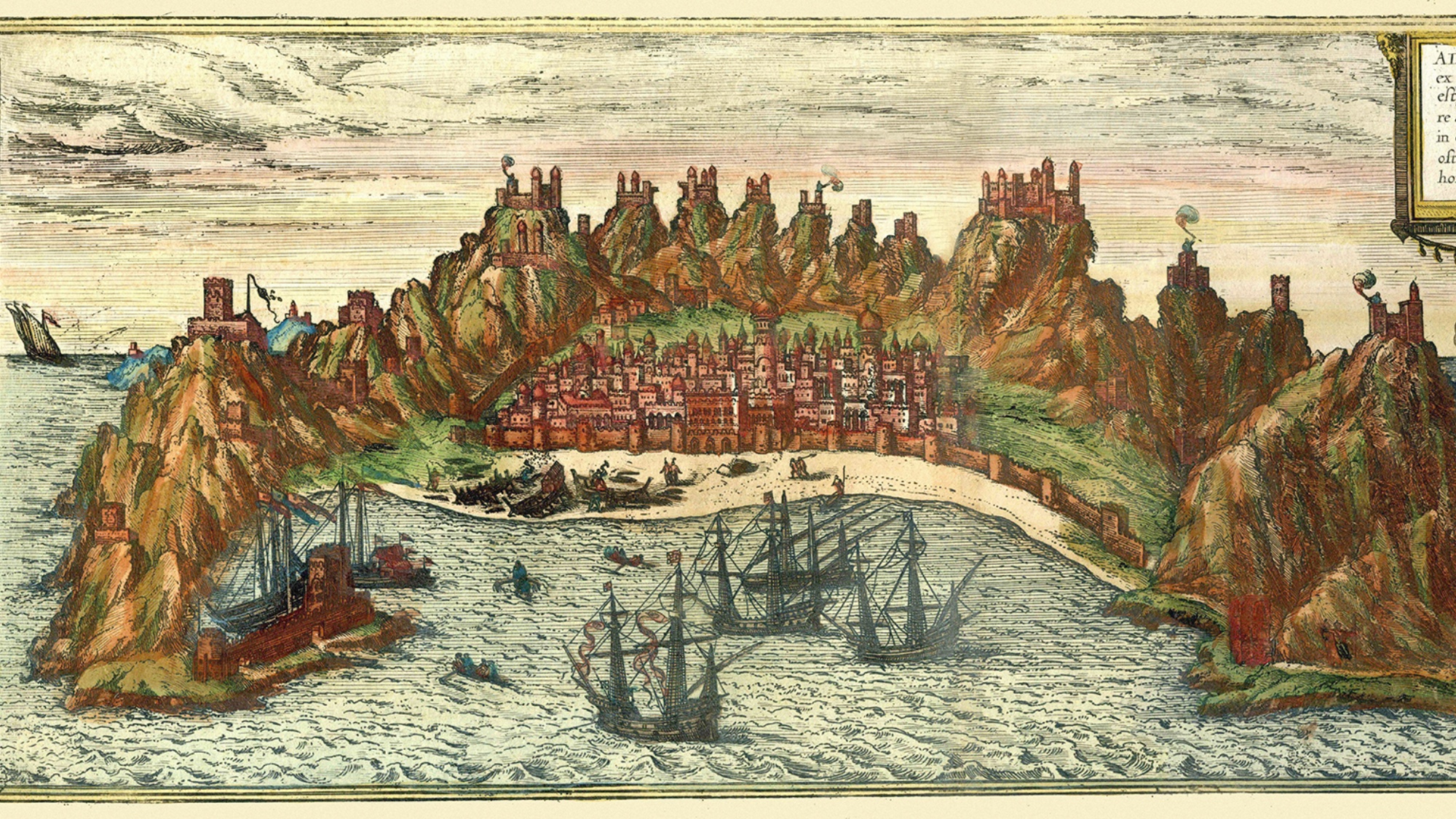Why is the Rosetta mission so important? A short history of comet exploration.
The close-up study of comets may give us a better idea of Earth's development


Exciting as it is (and it is incredibly exciting), the Rosetta mission is just the latest in a history of comet exploration that has added to our knowledge of these icy dirtballs.
Comets are usually just a few kilometres across and consist of a mixture of ice, carbon-based material, and rock dust. A comet can develop a spectacular million kilometer-long tail of gas and dust when its elongated orbit brings it close to the sun.
The warmth of the sun vaporizes water, carbon monoxide, and other volatile substances that are otherwise held as ice. Jets of gas escape from the solid part of the comet (its nucleus) to feed the growing tail. However, for most of the time a comet is far from the sun, and it is simply a dark, dusty object too faint to detect using even the largest telescopes.
The Week
Escape your echo chamber. Get the facts behind the news, plus analysis from multiple perspectives.

Sign up for The Week's Free Newsletters
From our morning news briefing to a weekly Good News Newsletter, get the best of The Week delivered directly to your inbox.
From our morning news briefing to a weekly Good News Newsletter, get the best of The Week delivered directly to your inbox.
It is hoped that access to a comet will provide a pristine, deep-frozen sample of the material from which planets were built. Comets have been hitting the Earth since the Earth was formed. We currently do not know what fraction of the Earth's ocean water was delivered to the surface by comets after the Earth was formed, as opposed to water that escaped from inside and condensed on the early Earth.
Comets also carry organic molecules — and one theory has it that these building blocks for life on Earth were delivered by comets rather than forming here. Recent observations by the ALMA telescope in Chile revealed very simple organic molecules — two sorts of hydrogen cyanide and also formaldehyde — being made in comets today.
Missions to comets
Small wonder, then, that comets have been the targets of several space missions. To date, eight comets have been visited over the course of 10 successful missions. In 1982, a probe called ISEE-3, which had already been in space for four years, was renamed International Cometary Explorer (ICE) and re-tasked to fly past comet Giacobini-Zinner, at a minimum distance of 7,862km. The probe had no cameras on board, but other sensors gathered data on the interplay between the solar wind and the comet's atmosphere. ICE subsequently joined a fleet of two Soviet, two Japanese, and one European Space Agency probe that studied Halley's comet in 1986. ESA's mission, Giotto, was the best equipped. It got to within nearly 600km, and sent back the first close-up pictures of a comet's nucleus.
A free daily email with the biggest news stories of the day – and the best features from TheWeek.com
The most spectacular mission before Rosetta was NASA's Deep Impact, which in 2005 dropped an impactor into the nucleus of comet Tempel 1, while the mother-ship watched. The impact excavated more dust and less ice than had been expected. Another surprise was that much of this material was clays and carbonates, which usually require liquid water for their formation.
Only one mission has brought back samples from a comet. This was NASA's Stardust, which in 2003 collected dust that was escaping from comet Wild 2. The sample return capsule made it back in 2006 and included grains that seemed to have formed at high temperatures in the inner solar system before heading out to the cold comet-forming region. There were also traces of an amino acid — glycine — adding weight to the idea that comets could be source of the building blocks of life. Remarkably, the Stardust mother-ship was redirected to Tempel 1, the only comet to have been visited on two different occasions. In 2011, it sent back pictures of the crater that had been made by Deep Impact's impactor.
Rosetta images
It is early days for Rosetta, and the team have yet to release more than a few images and other data from the main instruments. However, navigation camera images reveal a startling landscape in far greater detail than has previously been achieved. There are boulders up to several meters in size, patchily distributed across the surface.
A view from Rosetta's navigation camera on 26 October, about 8 km above the comet's surface, from which range the field of view is less than 1 km across. (ESA/The Conversation UK)
Are they pure ice? Dust cemented by ice? Will the apparently smooth areas turn out to be just as rugged on a smaller scale when the Philae lander gets close enough to see finer detail? What are the exposed layers that can be seen in some areas, and how did they form? And how is all this compatible with the extremely low-bulk density of the comet, which Rosetta's orbit and shape-mapping have revealed to be only about 40 percent the density of solid ice? The interior must be porous, but there's precious little sign of that at the surface.
More from The Conversation UK...
-
 Antibiotic resistance: the hidden danger on Ukraine’s frontlines
Antibiotic resistance: the hidden danger on Ukraine’s frontlinesUnder The Radar Threat is spreading beyond war zones to the ‘doorstep’ of western Europe
-
 ‘Capitalism: A Global History’ by Sven Beckert and ‘American Canto’ by Olivia Nuzzi
‘Capitalism: A Global History’ by Sven Beckert and ‘American Canto’ by Olivia NuzziFeature A consummate history of capitalism and a memoir from the journalist who fell in love with RFK Jr.
-
 Who will the new limits on student loans affect?
Who will the new limits on student loans affect?The Explainer The Trump administration is imposing new limits for federal student loans starting on July 1, 2026
